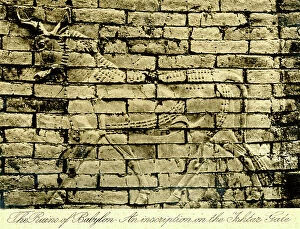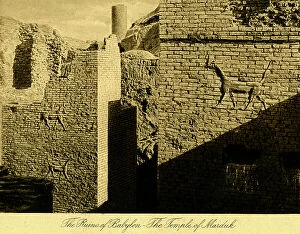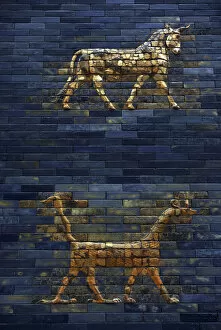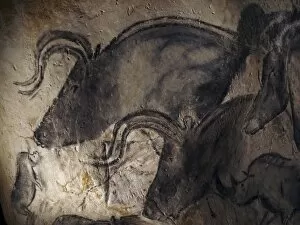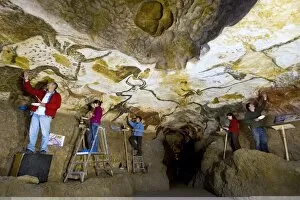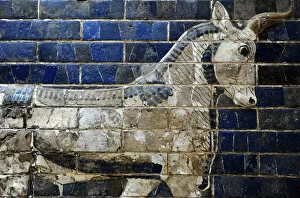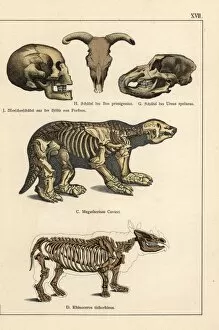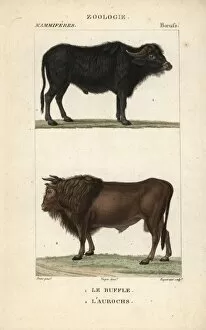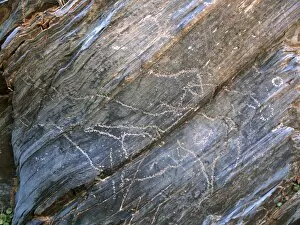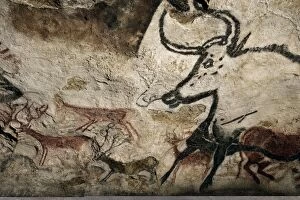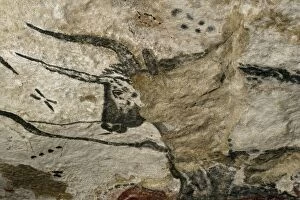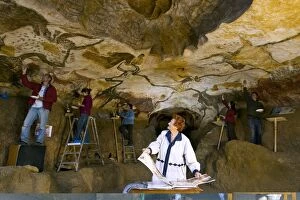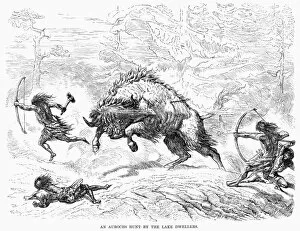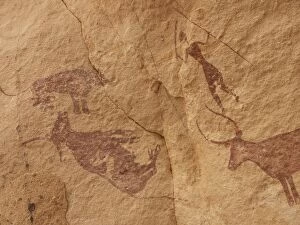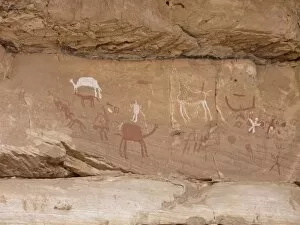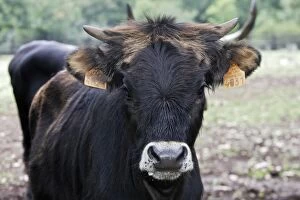Auroch Collection
The auroch, an ancient and majestic creature, has left its mark throughout history
For sale as Licensed Images
Choose your image, Select your licence and Download the media
The auroch, an ancient and majestic creature, has left its mark throughout history. From the prehistoric cave paintings of Lascaux II to the grandeur of the Ishtar Gate in Babylon, this magnificent beast has captivated human imagination for centuries. In the replica of the Lascaux II cave painting C013/7378, we see a depiction of an auroch with its powerful horns and robust body. This artwork serves as a testament to our fascination with these creatures even in ancient times. Moving forward in time, we encounter the Ishtar Gate from 4th century BC Babylon. Here, intricate decorations featuring aurochs and dragons adorn this monumental structure. The craftsmanship displayed on these reliefs showcases not only artistic skill but also reverence for these awe-inspiring animals. Fossil skulls and skeletons provide us with tangible evidence of the existence of aurochs. These remnants remind us that they were once real beings that roamed our planet alongside other species like water buffalo (Bubalus bubalis). Unfortunately, due to various factors including hunting and habitat loss they can now extinct. Returning to the Ishtar Gate's decorations from the 6th century BC Babylonian era, we witness yet again how deeply ingrained aurochs were in their culture. The combination of strength symbolized by these mighty beasts along with mythical creatures like dragons created an aura of power and mystique within their society. Lastly, let us not forget about their presence in prehistoric cave paintings such as Chauvet C016/0576. These early depictions offer glimpses into humanity's connection with nature and our desire to understand and appreciate it through art. The story of the auroch is one that spans millennia - from being immortalized on cave walls to adorning grand gates - it continues to leave its mark on human history. Though no longer among us today, its legacy lives on through art and our fascination with these magnificent creatures.


